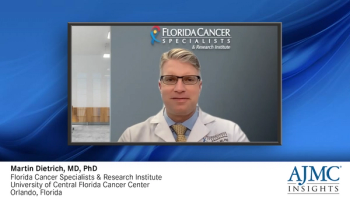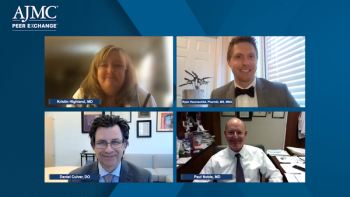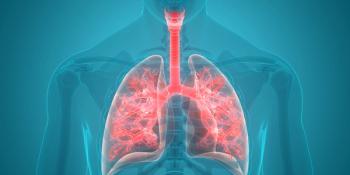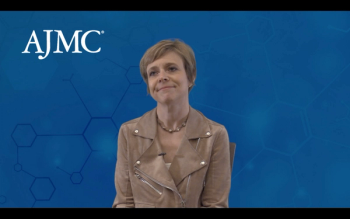
Small Cell Lung Cancer
Latest News
Latest Videos
CME Content
More News

Three medical experts highlight unmet needs they routinely run into while treating patients with NSCLC.

Joshua Sabari, MD, provides a breakdown of advanced non-small cell lung cancer (NSCLC) and its actionable mutations.

Dr Kristin Highland continues the treatment landscape discussion, focusing on systemic sclerosis ILD (SSc-ILD) and clinical trial data that studied therapy options for IPF, PF-ILD, and SSc-ILD.

The panel provides an overview of the treatment landscape for idiopathic pulmonary fibrosis (IPF) and progressing fibrosing ILD (PF-ILD).

A patient’s quick response to cemiplimab (Libtayo) was reversed after the therapy was stopped due to progression of apparent metastatic cutaneous squamous cell carcinoma.

The study, based on a case series in Japan, found the risk of grade 2 or above chemoradiation increased when durvalumab was started within 14 days of the final thoracic radiotherapy treatment.

Drs Noble and Highland explain the typical treatment goals physicians aim for when looking at ILD therapy options.

Ryan Haumschild, PharmD, MS, MBA, and Kristin Highland, MD, explain the clinical and economic burdens associated with ILD treatment.

The study suggests standardized uptake values may be a useful marker to predict treatment response and prognosis in lung adenocarcinoma.

A new model may be able to better identify which patients will respond to immunotherapy.

Daniel Culver, DO, and Paul Noble, MD, highlight the types of physicians who manage patients with different forms of ILD, from diagnosis to treatment, as well as the process of referrals.

Daniel Culver, DO, and Paul Noble, MD, talk about incidence and prevalence typically seen with patients with ILD.

Drawing on data from more than 2000 patients, the researchers of the retrospective study found that pulmonary function test results were associated with overall survival in non-small cell lung cancer (NSCLC).

Researchers assessed treatment patterns and outcomes of patients with non-small cell lung (NSCLC) cancer and leptomeningeal disease exposed to osimertinib.

Results of a cross-sectional study showed former smokers eligible for lung cancer screening should be asked about recent tobacco use and exposure, while counseling about the harms of these 2 risk factors is warranted.

An analysis of data from the 2019 Global Burden of Disease Study revealed wide variations in lung cancer rates seen throughout the world over the past 30 years.

The findings are based off an analysis of 98,159 individuals.

Veterans residing in rural areas were less likely to complete annual repeat lung cancer screenings compared with those living in a nonrural location, with reduced uptake of initial lung cancer screening also found among eligible veterans in rural vs nonrural locations.

A subsequent analysis suggested, however, that segmentectomy was preferable to lobectomy in many cases.

A new meta-analysis found that more severe emphysema is associated with an increased risk of lung cancer.

A new review article summarizes current approaches to precision medicine in lung cancer.

Among a group of patients with lung cancer who were not suitable for anticancer treatment, the researchers found that 40% underwent additional investigations after their initial CT scan before eventually receiving best supportive care.

Researchers in Pennsylvania conducted a randomized controlled trial to understand the effect of patient outreach on lung cancer screening rates.

Melissa Johnson, MD, program director of Lung Cancer Research at Sarah Cannon, discusses the potential of certain drug classes for lung cancer.

A decade’s worth of data included more than 5 million social determinants of health (SDOH) attributes across nearly 2 million clinical notes from the patient visits extrapolated from a natural language processing system.














































